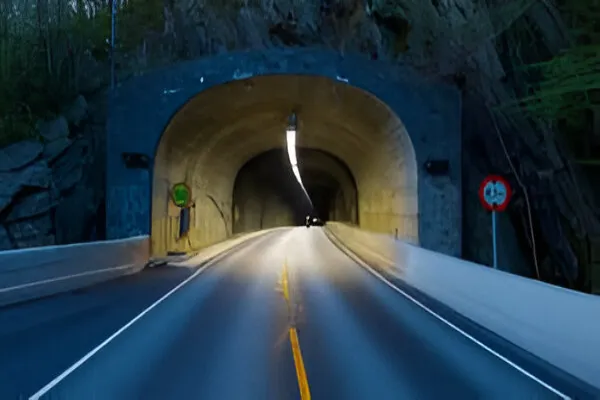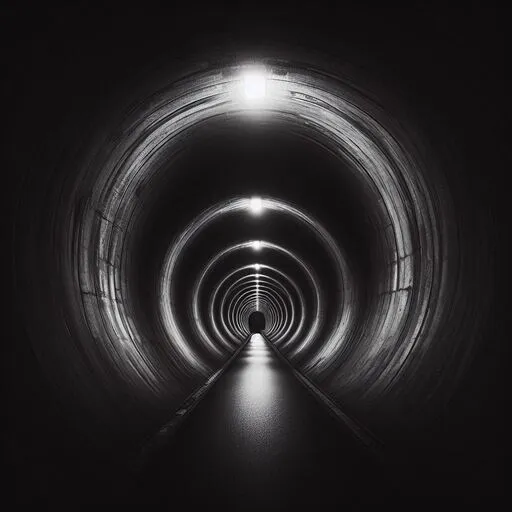Beyond the Surface: Fun Facts About Tunnels

Fun Facts About the Underbelly of the World
There are many fun facts about tunnels. Those dark, sometimes dank, often claustrophobia-inducing passageways that take us under mountains, rivers, and even entire cities. We use them, grumble about traffic jams (even underground, apparently!), and rarely stop to appreciate the sheer weirdness and wonder of these subterranean shortcuts.
But fear not, fellow spelunkers (or just people who occasionally get stuck in traffic)—today we’re ditching the boring construction signs and dusty documentaries and diving headfirst into the frivolous, and frankly fun facts about tunnels. Grab your imaginary headlamp and metaphorical spelunking hat, because we’re about to present the world’s underbelly (hopefully without encountering any creepy crawlies).
Fun Fact #1: The Longest Tunnel Isn’t Actually for Trains (Prepare to Be Shocked)
Tunnels. We usually associate them with speedy trains zipping through the darkness. But the title of the longest tunnel in the world goes to—wait for it—the East Drainage Tunnel in China. This drainage tunnel, clocking in at a staggering 35 kilometers (over 21 miles!), is part of a massive water diversion project. While it won’t get you from point A to point B in record time (unless your destination is a giant reservoir), it certainly takes the cake (or should I say the dumpling?) for sheer length in the non-train tunnel category.
Fun Fact #2: There’s a Tunnel in Vietnam Built by… Captives (Yikes!)
The Ho Chi Minh Trail. A network of tunnels used by the North Vietnamese army during the Vietnam War. These tunnels, stretching for hundreds of kilometers, served as living quarters, hospitals, and even supply routes. But here’s the sobering fact: many of these tunnels were built by prisoners of war and civilian laborers under harsh conditions. This is a reminder that tunnels, while feats of engineering, can also symbolize human suffering.
Fun Fact #3: There’s a Secret Tunnel Under the English Channel Used to… Smuggle Booze (Cheers to That!)
Ah, the English Channel. A body of water famous for its white cliffs and, apparently, secret booze-smuggling tunnels? Yep, you read that right. In the 18th century, a network of tunnels was built under the English Channel for, well, sneaking brandy and other goods past customs officials. Imagine the nerve (and the potential hangover) of these daring smugglers! Sadly, the tunnels were eventually discovered and bricked up, but they stand as a testament to humanity’s unwavering love for a good (and possibly illegal) drink.
Fun Fact #4: The Channel Tunnel Between England and France Originally Had… Pink Trains (Don’t Ask)

The Channel Tunnel. An undertaking of modern engineering that allows trains to zip under the English Channel. But the original design plans for this tunnel included a rather interesting detail: pink trains. The initial vision was for these high-speed trains to be a cheerful shade of pink. Thankfully, this idea was eventually scrapped (although a part of me kind of wants to see a bright pink train hurtling through the darkness).
Fun Fact #5: Some Tunnels Have Special… Residents (Not the Cute and Fuzzy Kind)
Tunnels are dark, damp, and often a haven for… well, things that don’t always make the best roommates. Take the London Underground, for example. This historical network of tunnels is rumored to be home to many creepy crawlies, from rats (no surprise there) to a ghost train that supposedly haunts the abandoned stations. If you’re riding the Tube, keep an eye out for any unexpected (and potentially furry) fellow passengers.
Fun Fact #6: Beyond Mining: The Diverse World of Tunnels
Tunnels are more than just dark and dusty passageways. Did you know that modern undertakings of engineering, called Tunnel Boring Machines (TBMs), can chew through rock at incredible speeds? These behemoths are a far cry from the pickaxes and explosives (drill and blast) once used by miners. Tunneling has deep ties to the mining industry, with vast networks dug to extract valuable resources like gold and copper. But these subterranean passageways have a much wider purpose, creating space for transportation, water flow, and even scientific research facilities! Remember the history and ingenious technology that brought it to life. Keep reading for more fun facts about tunnels.
Fun Fact #7: From Aquerducts to Myths: A Tunnel’s Through Time
Digging deeper into the past, tunnels hold a rich history woven into the fabric of civilizations. They were the backbone of ancient feats of engineering, like the Romans’ impressive aqueducts that channeled water for miles underground. Similarly, the legendary Silk Road passages, snaking through treacherous mountains, were carved by hand, becoming vital trade routes that shaped global commerce. Tunnels haven’t just served practical purposes; they’ve also sparked our imaginations. Folklore and mythology are rife with stories of hidden escape routes, fantastical creatures dwelling in the darkness, and lost treasures buried deep beneath the earth. These subterranean passageways continue to capture our fascination, blurring the line between history and legend.
Fun Fact #8: Minding the Environment: Balancing Innovation with Sustainability
Tunneling isn’t all about creating impressive feats of engineering. While these underground passageways play a crucial role in transportation, water flow, and even scientific exploration (like deep underground labs), constructing them can have an environmental impact. Unlike building bridges that leave a minimal footprint, tunnel projects involve excavating vast amounts of earth and rock using powerful TBMs or traditional drill and blast methods. This process can disrupt ecosystems, generate dust and noise pollution, and potentially alter groundwater flow. However, advancements in sustainable tunneling practices are mitigating these concerns. Recycling excavated materials, using closed-circuit ventilation systems, and meticulously planning routes to minimize disruption are just some of the of the ways engineers are building tunnels with a greener conscience.
Fun Fact #9: Underground Warfare: A Balancing Act of Strategy and Sustainability
Tunnels go deeper than just civil engineering. The subterranean world has played a vital role in military strategy for millennia. From intricate networks of bunkers used for shelter and storage during wartime to covert escape routes allowing soldiers to evade capture, tunnels have been instrumental in military operations. However, their construction isn’t without environmental impact. Tunneling projects can disrupt ecosystems and displace wildlife, especially in sensitive areas. Military installations with vast underground complexes can also pose challenges in terms of waste disposal and potential groundwater contamination. Finding a balance between the tactical advantages of tunnels and responsible environmental practices remains an ongoing consideration for military engineers.
Fun Fact #10: Nature’s Underground Art: From Caverns to Ecosystems
Nature itself is a master tunneler! The world beneath our feet is riddled with a labyrinth of subterranean passageways, from the vast networks carved by rivers over millennia to the intricate cave systems formed by the dissolving power of water on rock. These natural tunnels are a hidden ecosystem, teeming with unique life forms adapted to the darkness and constant moisture. Unlike their man-made counterparts, these caverns are formed through slow, natural processes, shaping the very foundation of our planet. Studying these subterranean passageways not only helps us understand geological history but also sheds light on the remarkable diversity of life that thrives in the darkness far below the surface.
Fun Facts About Tunnels: More Than Just a Shortcut
These are just a taste of the many fun facts about tunnels that lurk beneath the surface (or, should I say, below the ground) of our tunnels. From boozy smuggling operations to questionable train color choices, tunnels offer a glimpse into human ingenuity, historical struggles, and the occasional encounter with the creepy crawlies of the underworld. Anyway, next time you find yourself hurtling through a tunnel, take a moment to appreciate the engineering undertaking beneath your feet (and maybe say a silent prayer that you don’t encounter any rogue rats or ghostly train conductors).